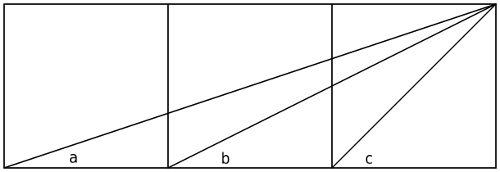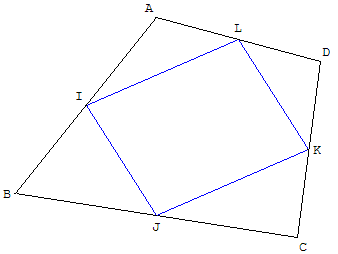
Science & Math
A Feathered Maître d’
The greater honeyguide of Africa eats beeswax but isn’t always able to invade a hive on its own. So it has forged a unique partnership with human beings: The bird attracts the attention of local honey hunters with a chattering call, flies toward a hive, then stops and calls again. When they arrive at the hive, the humans open it, subdue the bees with smoke, take the honey, and leave the wax for the bird.
This arrangement saves the humans an average of 5.7 hours in searching for hives, but it’s not foolproof. “We have been ‘guided’ to an abrupt precipice and to a bull elephant by greater honeyguides,” report biologists Lester Short and Jennifer Horne. “In these cases there were bee-hives below the cliff (in a valley) and beyond the elephant. Concern for the welfare of the guided person is beyond any reasonable expectation of a honeyguide.”
(Thanks, Tom.)
Reality Unperceived

But, say you, surely there is nothing easier than for me to imagine trees, for instance, in a park, or books existing in a closet, and nobody by to perceive them. I answer, you may so, there is no difficulty in it; but what is all this, I beseech you, more than framing in your mind certain ideas which you call books and trees, and the same time omitting to frame the idea of any one that may perceive them? But do not you yourself perceive or think of them all the while? This therefore is nothing to the purpose; it only shews you have the power of imagining or forming ideas in your mind: but it does not shew that you can conceive it possible the objects of your thought may exist without the mind.
— George Berkeley, A Treatise Concerning the Principles of Human Knowledge, 1710
The Sleeping Beauty Problem

Prince Charming tells Sleeping Beauty, “I’m going to put you to sleep with this potion, and then I’ll flip a coin. Today is Sunday. If the coin lands heads, I’ll wake you again on Monday. If it lands tails, then I’ll wake you on Monday, put you to sleep again, and wake you on Tuesday. The potion induces a mild amnesia, so you won’t remember the intermediate awakening if it happens, but otherwise it won’t hurt you.”
When Sleeping Beauty awakes, what probability should she assign that the coin landed heads?
There seem to be two contradictory answers to this. From one perspective, the coin was fair, so it would seem the chance is 1/2. But from another, Beauty finds herself in one of three equally likely situations (heads/Monday, tails/Monday, and tails/Tuesday), so the chance of heads appears to be 1/3. Which is correct?
A Pretty Fact

Given three adjacent squares,
a + b = c.
“Beauty is the first test,” wrote G.H. Hardy. “There is no permanent place in the world for ugly mathematics.”
A Square Surprise

The lowly 3×3 magic square has modest pretensions — each row, column, and diagonal produces the same sum.
But perhaps it’s magicker than we suppose:
6182 + 7532 + 2942 = 8162 + 3572 + 4922 (rows)
6722 + 1592 + 8342 = 2762 + 9512 + 4382 (columns)
6542 + 1322 + 8792 = 4562 + 2312 + 9782 (diagonals)
6392 + 1742 + 8522 = 9362 + 4712 + 2582 (counter-diagonals)
6542 + 7982 + 2132 = 4562 + 8972 + 3122 (diagonals)
6932 + 7142 + 2582 = 3962 + 4172 + 8522 (counter-diagonals)
(R. Holmes, “The Magic Magic Square,” The Mathematical Gazette, December 1970)
More: Any of the equations above will still hold if you remove the middle digit or any two corresponding digits in each of the six addends.
Yet more: (6 × 1 × 8) + (7 × 5 × 3) + (2 × 9 × 4) = (6 × 7 × 2) + (1 × 5 × 9) + (8 × 3 × 4)
I think everything above will work for any rotation or reflection of the square (that is, for any normal 3×3 magic square). I haven’t checked, though.
Ladies’ Night
Is a legal chess game possible in which all the pawns promote and each player has nine queens?
Yes — Freidrich Burchard of Germany and Friedrich Hariuc of Romania reached nearly identical solutions in 1980:
1. e4 f5 2. e5 Nf6 3. exf6 e5 4. g4 e4 5. Ne2 e3 6. Ng3 e2 7. h4 f4 8. h5 fxg3 9. h6 g5 10. Rh4 gxh4 11. g5 g2 12. g6 Bg7 13. hxg7 g1=Q 14. f4 h3 15. f5 h2 16. b4 a5 17. b5 a4 18. b6 a3 19. Bb2 Ra7 20. bxa7 axb2 21. a4 b5 22. a5 b4 23. a6 b3 24. c4 h1=Q 25. c5 h5 26. c6 Bb7 27. cxb7 c5 28. d4 c4 29. d5 Nc6 30. dxc6 c3 31. c7 c2 32. c8=Q c1=Q 33. b8=Q Qc7 34. a8=Q d5 35. a7 d4 36. Nc3 dxc3 37. Qa6 c2 38. Qa8b7 c1=Q 39. a8=Q Qd5 40. gxh8=Q+ Kd7 41. g7 bxa1=Q 42. g8=Q b2 43. f7 b1=Q 44. f8=Q h4 45. f6 h3 46. f7 h2 47. Qfa3 h1=Q 48. f8=Q exf1=Q+

This may be the shortest possible such game.
Numerius Negidius
Only 43 numbers have names that lack the letter N.
One of them, fittingly, is forty-three.
Varignon’s Theorem

Draw any quadrilateral and connect the midpoints of its sides.
You’ll always get a parallelogram.
Triangles, too, have perfection at heart.
Actual Size

The familiar Mercator projection is useful for navigation, but it exaggerates the size of regions at high latitudes. Greenland, for example, appears to be the same size as South America, when in fact it’s only one eighth as large.
An equal-area projection such as the Mollweide, below, distorts the shapes of regions but preserves their relative size. This reveals some surprising facts: Russia is larger than Antarctica, Mexico is larger than Alaska, and Africa is just mind-bogglingly huge — larger than the former Soviet Union, larger than China, India, Australia, and the United States put together.

